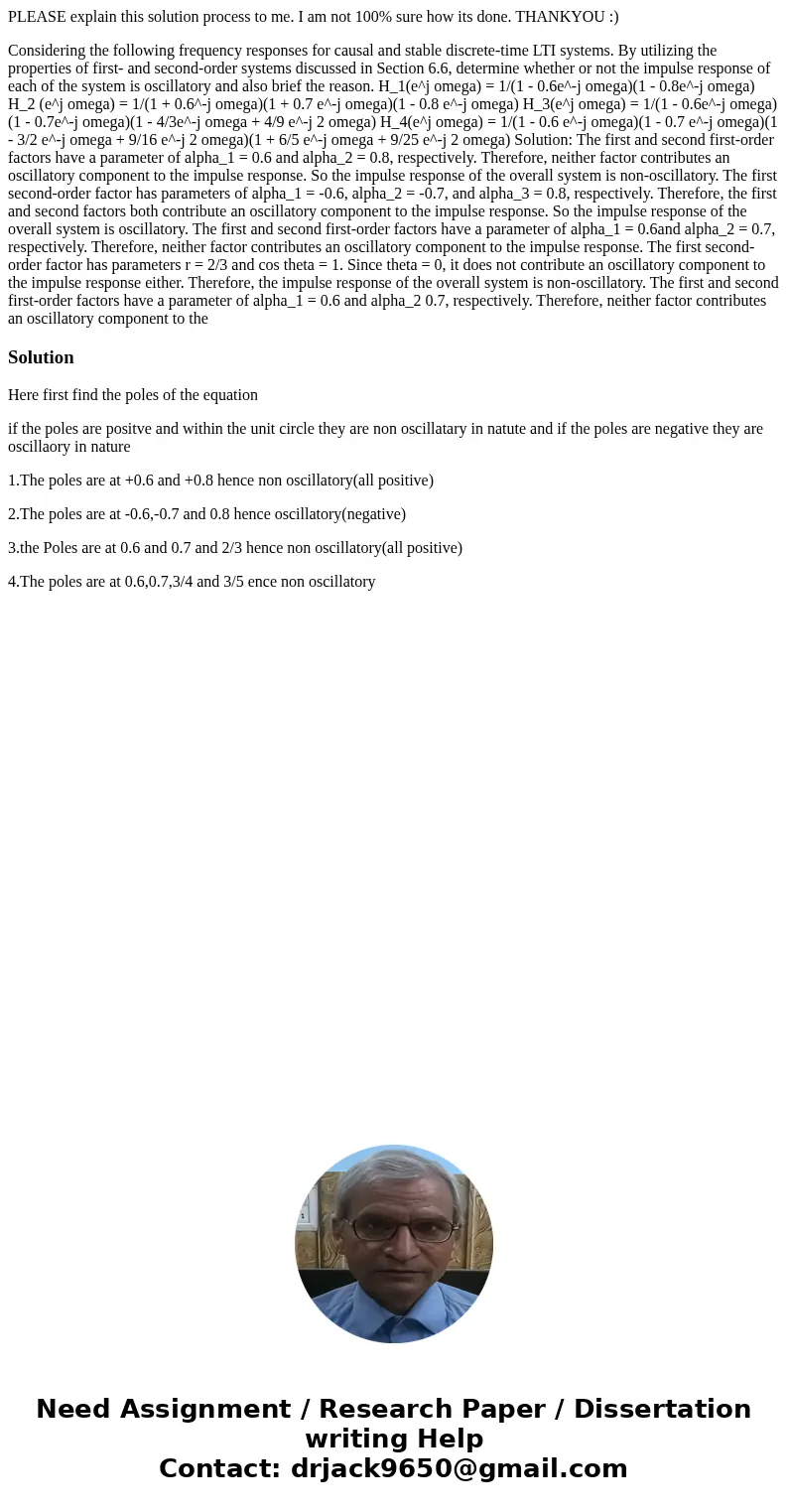PLEASE explain this solution process to me I am not 100 sure
PLEASE explain this solution process to me. I am not 100% sure how its done. THANKYOU :)
Considering the following frequency responses for causal and stable discrete-time LTI systems. By utilizing the properties of first- and second-order systems discussed in Section 6.6, determine whether or not the impulse response of each of the system is oscillatory and also brief the reason. H_1(e^j omega) = 1/(1 - 0.6e^-j omega)(1 - 0.8e^-j omega) H_2 (e^j omega) = 1/(1 + 0.6^-j omega)(1 + 0.7 e^-j omega)(1 - 0.8 e^-j omega) H_3(e^j omega) = 1/(1 - 0.6e^-j omega)(1 - 0.7e^-j omega)(1 - 4/3e^-j omega + 4/9 e^-j 2 omega) H_4(e^j omega) = 1/(1 - 0.6 e^-j omega)(1 - 0.7 e^-j omega)(1 - 3/2 e^-j omega + 9/16 e^-j 2 omega)(1 + 6/5 e^-j omega + 9/25 e^-j 2 omega) Solution: The first and second first-order factors have a parameter of alpha_1 = 0.6 and alpha_2 = 0.8, respectively. Therefore, neither factor contributes an oscillatory component to the impulse response. So the impulse response of the overall system is non-oscillatory. The first second-order factor has parameters of alpha_1 = -0.6, alpha_2 = -0.7, and alpha_3 = 0.8, respectively. Therefore, the first and second factors both contribute an oscillatory component to the impulse response. So the impulse response of the overall system is oscillatory. The first and second first-order factors have a parameter of alpha_1 = 0.6and alpha_2 = 0.7, respectively. Therefore, neither factor contributes an oscillatory component to the impulse response. The first second-order factor has parameters r = 2/3 and cos theta = 1. Since theta = 0, it does not contribute an oscillatory component to the impulse response either. Therefore, the impulse response of the overall system is non-oscillatory. The first and second first-order factors have a parameter of alpha_1 = 0.6 and alpha_2 0.7, respectively. Therefore, neither factor contributes an oscillatory component to theSolution
Here first find the poles of the equation
if the poles are positve and within the unit circle they are non oscillatary in natute and if the poles are negative they are oscillaory in nature
1.The poles are at +0.6 and +0.8 hence non oscillatory(all positive)
2.The poles are at -0.6,-0.7 and 0.8 hence oscillatory(negative)
3.the Poles are at 0.6 and 0.7 and 2/3 hence non oscillatory(all positive)
4.The poles are at 0.6,0.7,3/4 and 3/5 ence non oscillatory

 Homework Sourse
Homework Sourse